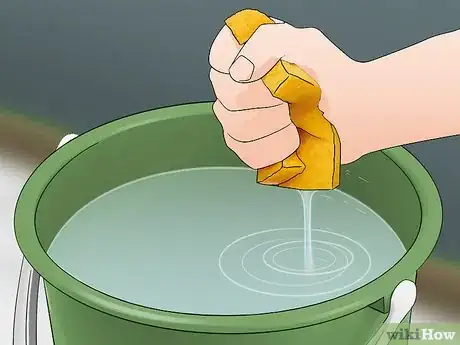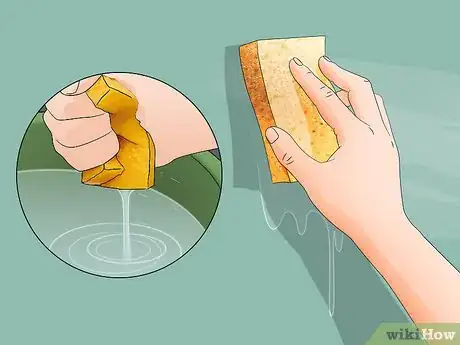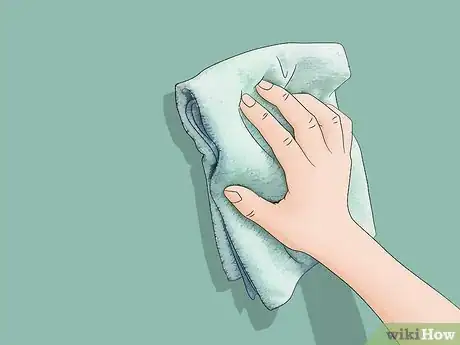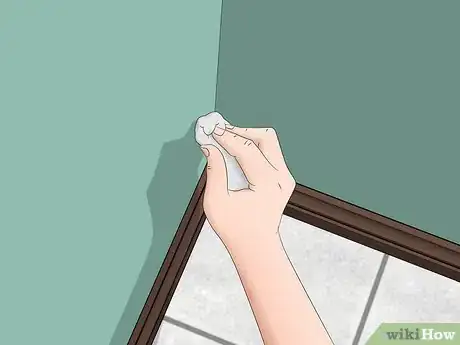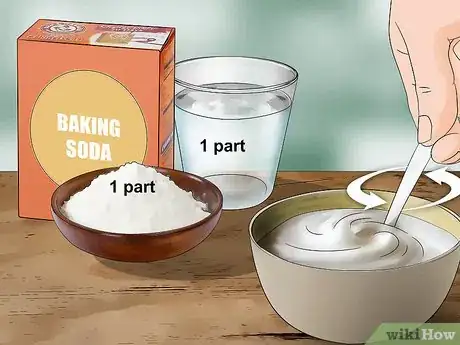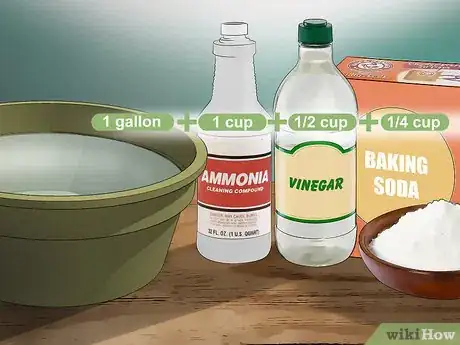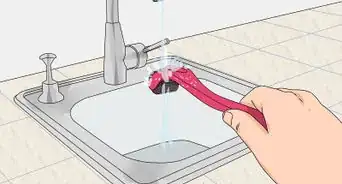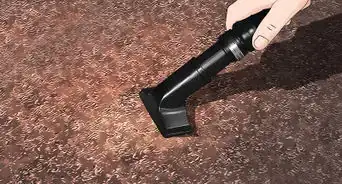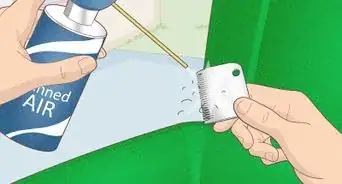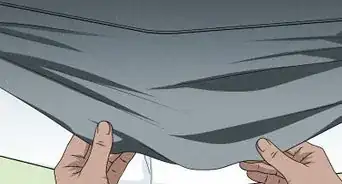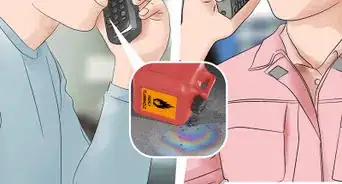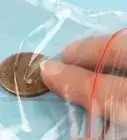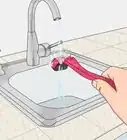This article was co-authored by Regina DeCorte and by wikiHow staff writer, Amber Crain. Regina DeCorte is a Residential Cleaning Specialist and is the Founder of Maid in JC, a home cleaning service based in downtown Jersey City, NJ. With more than eight years of experience, she specializes in cleaning apartments, condos, and townhomes using natural products. Regina and her staff are fully bonded and insured.
There are 7 references cited in this article, which can be found at the bottom of the page.
This article has been viewed 19,007 times.
Enamel paint is durable and resistant to damage. However, when cleaning painted surfaces, it is best to err on the side of caution and use less abrasive materials. Dust your walls and ceiling at least once per year with your vacuum's brush attachment. To get rid of simple dirt and smudges, use a mild solution of warm water and dish soap. There are several ways to approach tougher stains, such as using a baking soda paste or a Magic Eraser.
Steps
Doing Routine Cleaning
-
1Dust painted walls at least once every year. Dust removal is important for maintaining enamel-painted surfaces, but an annual dusting is all that most walls need. Run the brush attachment on your vacuum over the walls and ceilings to quickly remove dust from the surface.[1]
- For smaller areas, a hand duster should suffice.
- Always dust before you do a deeper clean. For instance, before trying to remove a stain, give the walls a quick dusting.
-
2Make a cleaning solution with mild dish soap and warm water. Dirt and smudges will require more than a simple dusting to remove them. Fill a medium-sized bucket with warm water, then add a few drops of mild dish detergent.[2] Use your hand or stirring device to mix them together. Fill a separate bucket up with just warm water.
- You could also mix three tablespoons of distilled white vinegar in a gallon of water to create a safe cleaning solution for enamel-painted walls.[3]
Advertisement -
3
-
4Work in sections. Divide the surface up into a series of vertical sections and clean them one at a time. Starting from the top and working your way down to the bottom, gently use the sponge to scrub the surface in circular motion. Once the sponge starts looking dirty, dip it back into the solution, wring it out thoroughly, and continue.[6]
- If the water in the bucket starts to look dirty during the process, dump it out and create a fresh batch of cleaning solution.
-
5Rinse each section with clean water after scrubbing. Wet a second sponge with the clean water in your second bucket. Starting at the top and working your way down, use the wet sponge to wipe down the section and rinse away the cleaning solution. Be sure to remove all soap thoroughly, since dirt and grime can stick to soap residue if left on the wall.[7]
-
6
Removing Tough Stains
-
1Perform a spot test with your intended cleaner. Before you get started, apply a small amount of the cleaner on an inconspicuous spot on the wall. Rub it in, and then wipe it off. Carefully inspect the area to ensure the color of the paint isn't negatively affected.[10]
- Even if it seems to be fine, only use abrasive cleaners when absolutely necessary.[11]
-
2Make a paste with baking soda and water. Mix equal parts of baking soda and water to create a thick paste. Use your fingers or a utensil to apply the paste directly onto the stained area. Gently scrub the area with a non-abrasive sponge.[12] Rinse with clean water and dry thoroughly.[13]
- You can add vinegar to the baking soda and water if you want something a little stronger![14]
-
3Use a Magic Eraser on crayon and fingerprint stains. Magic Erasers can be useful for removing tough stains left behind by small children. Wet the sponge, then wring it out. Scrub at the stain until it disappears. Use the less abrasive side of the sponge so that you don’t scratch up the wall.[15]
-
4Get rid of tough stains with ammonia, vinegar and baking soda. If dish soap, baking soda, vinegar and Magic Erasers all failed to remove the stain, create a stronger cleaning solution. Mix a gallon of water with 1 cup (120 mL) of ammonia, ½ cup (60 mL) of vinegar, and ¼ cup (30 g) of baking soda. Use a gentle sponge to rub the solution into the stain with a circular motion.[16]
- Rinse the solution away with a sponge dipped in clean water. Dry the area thoroughly.
References
- ↑ https://www.bobvila.com/articles/how-to-clean-painted-walls/#.WPdvMIjys2w
- ↑ Regina DeCorte. Residential Cleaning Specialist. Expert Interview. 31 May 2022.
- ↑ http://www.today.com/home/how-clean-painted-walls-t44646
- ↑ Regina DeCorte. Residential Cleaning Specialist. Expert Interview. 31 May 2022.
- ↑ https://www.bobvila.com/articles/how-to-clean-painted-walls/#.WPd2SYgrI2y
- ↑ https://www.bobvila.com/articles/how-to-clean-painted-walls/#.WPd2SYgrI2y
- ↑ https://www.bobvila.com/articles/how-to-clean-painted-walls/#.WPd2SYgrI2y
- ↑ Regina DeCorte. Residential Cleaning Specialist. Expert Interview. 31 May 2022.
- ↑ https://www.bobvila.com/articles/how-to-clean-painted-walls/#.WPd384grI2z
- ↑ Amy Mikhaiel. House Cleaning Professional. Expert Interview. 3 February 2019.
- ↑ https://www.bobvila.com/articles/how-to-clean-painted-walls/#.WPd384grI2z
- ↑ Amy Mikhaiel. House Cleaning Professional. Expert Interview. 3 February 2019.
- ↑ https://www.bobvila.com/articles/how-to-clean-painted-walls/#.WQ5hAsa1vIV
- ↑ Amy Mikhaiel. House Cleaning Professional. Expert Interview. 3 February 2019.
- ↑ https://www.bobvila.com/articles/how-to-clean-painted-walls/#.WPd384grI2z
- ↑ https://www.bobvila.com/articles/how-to-clean-painted-walls/#.WPd384grI2z
About This Article
To clean dirt and smudges from enamel painted surfaces, wipe the area with a soft sponge dipped in a solution of warm water and mild dish soap. After cleaning, rinse the section with another sponge dampened with plain water, then dry with a clean towel. For tough stains, apply a paste of water and baking soda over the stain, gently scrub with a sponge, and rinse with clean water. If the stain persists, rub the area with a solution of water, ammonia, white vinegar, and baking soda, then wipe off the residue with a sponge dipped in water. For more advice, including how to remove crayon and fingerprint stains, keep reading!



